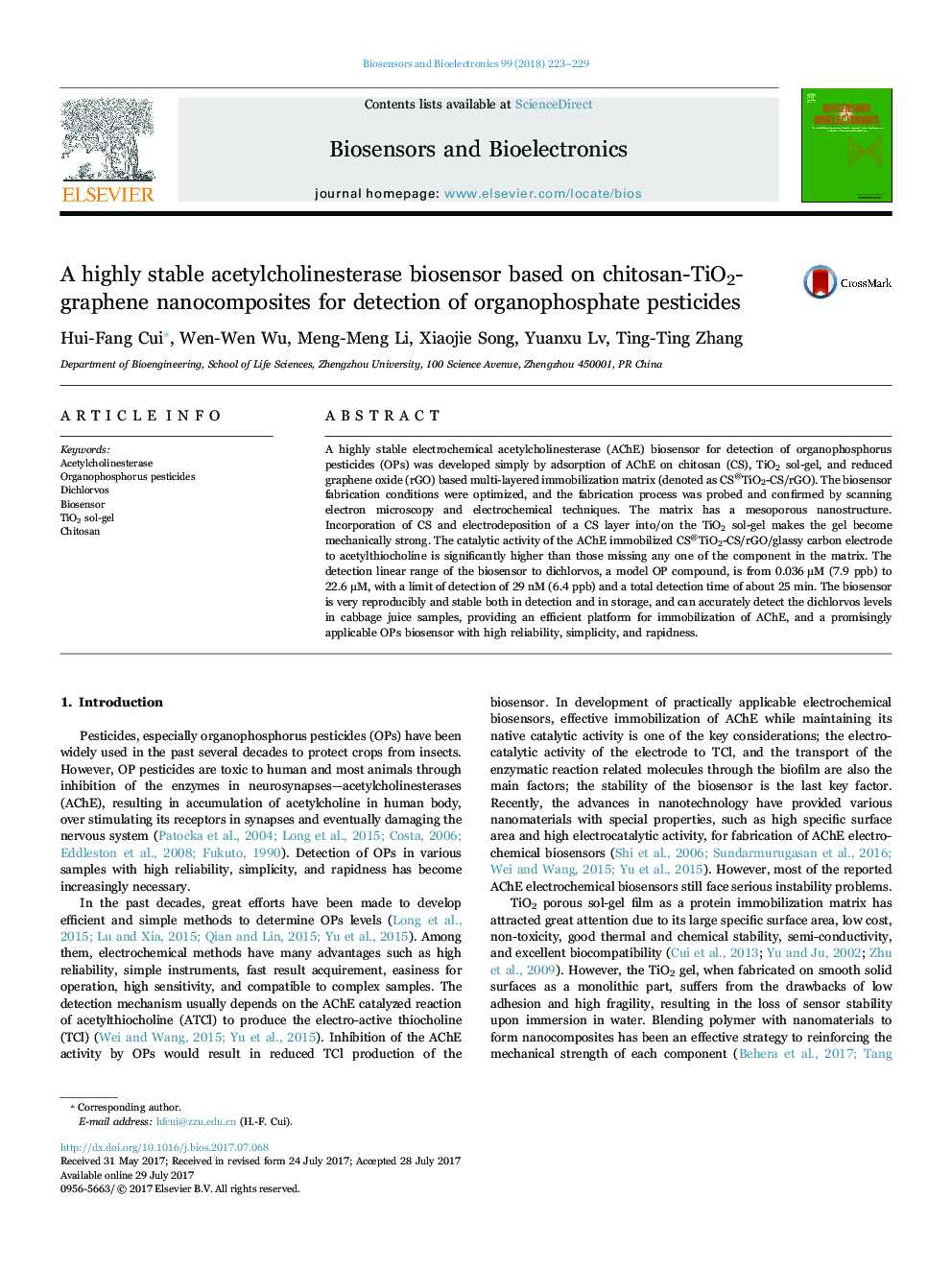| Article ID | Journal | Published Year | Pages | File Type |
|---|---|---|---|---|
| 5031332 | Biosensors and Bioelectronics | 2018 | 7 Pages |
â¢Chitosan (CS) was electrodeposited on and also incorporated in TiO2 sol-gel.â¢The TiO2 sol-gel was layered on rGO film modified GC electrode.â¢AChE was efficiently immobilized into the matrix.â¢The CS@TiO2-CS/rGO matrix is mechanically strong.â¢The biosensor is stable, sensitive, reproducible and accurate in detection OP.
A highly stable electrochemical acetylcholinesterase (AChE) biosensor for detection of organophosphorus pesticides (OPs) was developed simply by adsorption of AChE on chitosan (CS), TiO2 sol-gel, and reduced graphene oxide (rGO) based multi-layered immobilization matrix (denoted as CS@TiO2-CS/rGO). The biosensor fabrication conditions were optimized, and the fabrication process was probed and confirmed by scanning electron microscopy and electrochemical techniques. The matrix has a mesoporous nanostructure. Incorporation of CS and electrodeposition of a CS layer into/on the TiO2 sol-gel makes the gel become mechanically strong. The catalytic activity of the AChE immobilized CS@TiO2-CS/rGO/glassy carbon electrode to acetylthiocholine is significantly higher than those missing any one of the component in the matrix. The detection linear range of the biosensor to dichlorvos, a model OP compound, is from 0.036 μM (7.9 ppb) to 22.6 μM, with a limit of detection of 29 nM (6.4 ppb) and a total detection time of about 25 min. The biosensor is very reproducibly and stable both in detection and in storage, and can accurately detect the dichlorvos levels in cabbage juice samples, providing an efficient platform for immobilization of AChE, and a promisingly applicable OPs biosensor with high reliability, simplicity, and rapidness.
